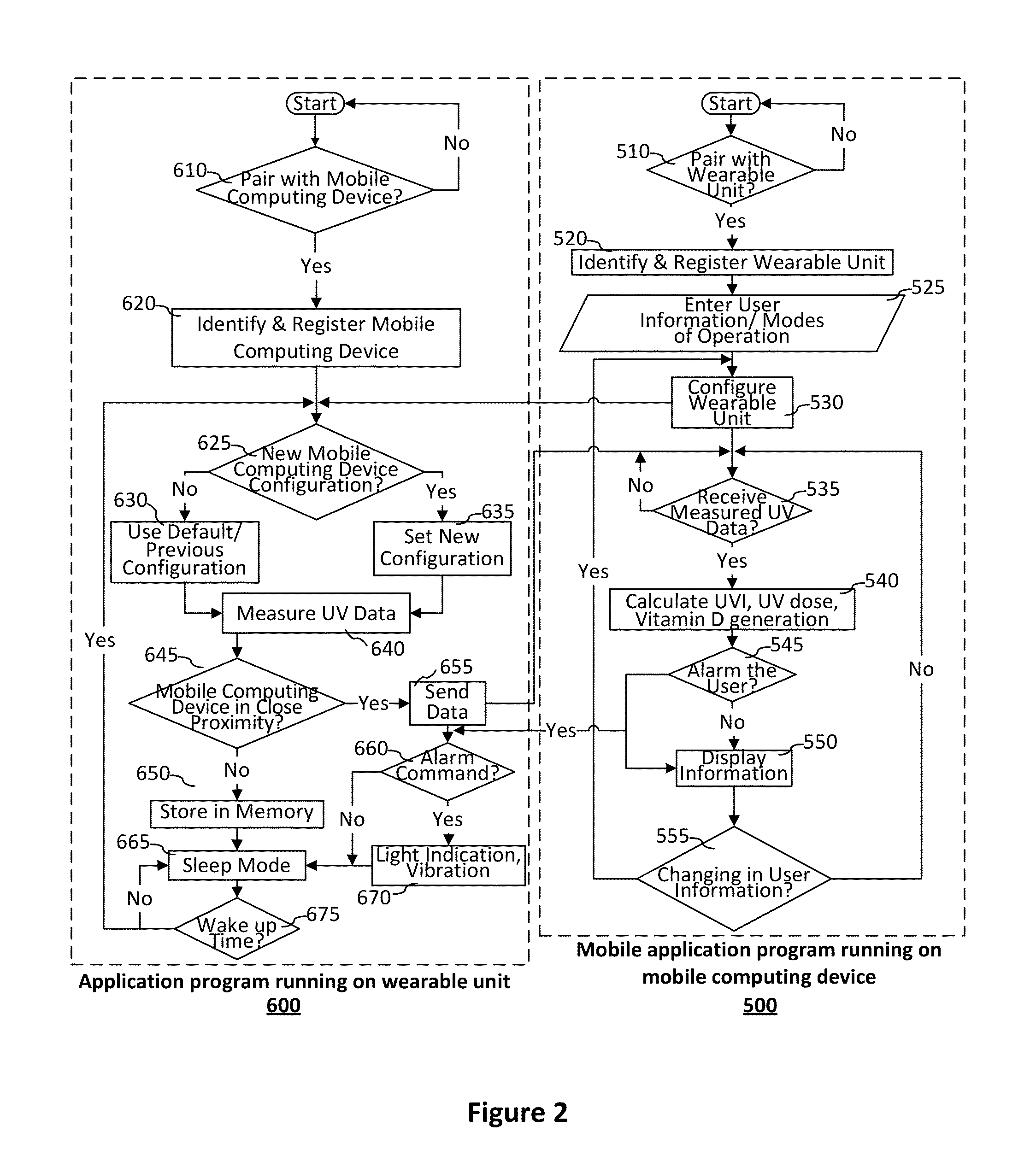UV dosimetry system with sensor data correction
a dosimetry system and sensor technology, applied in the field of ultraviolet light dosimetry system with sensor data correction, can solve the problems of vitamin d deficiency, sunburn, skin cancer, etc., and achieve the effect of avoiding skin damage, avoiding skin cancer, and avoiding skin cancer
- Summary
- Abstract
- Description
- Claims
- Application Information
AI Technical Summary
Benefits of technology
Problems solved by technology
Method used
Image
Examples
Embodiment Construction
General Description of the System Components
[0030]According to a typical embodiment of this invention, the personal UV dosimetry system comprises a UV sensing unit and a mobile computing unit. The UV sensing unit comprises a circuitry for measuring the irradiating UV intensity. The UV sensing unit is capable of wirelessly and bi-directionally communicating with the mobile computing unit, such as a smart phone or a tablet computer. As known in the art, the mobile computing unit usually has rechargeable battery, a built-in camera, a location / navigation system such as the Global Positioning System (GPS), a user interface for receiving user input and generating various types of output, including but are not limited to, high resolution display, user notifications (e.g. via sound, vibration, text message, etc). The mobile computing unit runs an operating system (e.g. iOS, Android, etc.) and is capable of wireless connection to a communication network. The mobile computing unit has the sof...
PUM
 Login to View More
Login to View More Abstract
Description
Claims
Application Information
 Login to View More
Login to View More - R&D
- Intellectual Property
- Life Sciences
- Materials
- Tech Scout
- Unparalleled Data Quality
- Higher Quality Content
- 60% Fewer Hallucinations
Browse by: Latest US Patents, China's latest patents, Technical Efficacy Thesaurus, Application Domain, Technology Topic, Popular Technical Reports.
© 2025 PatSnap. All rights reserved.Legal|Privacy policy|Modern Slavery Act Transparency Statement|Sitemap|About US| Contact US: help@patsnap.com



